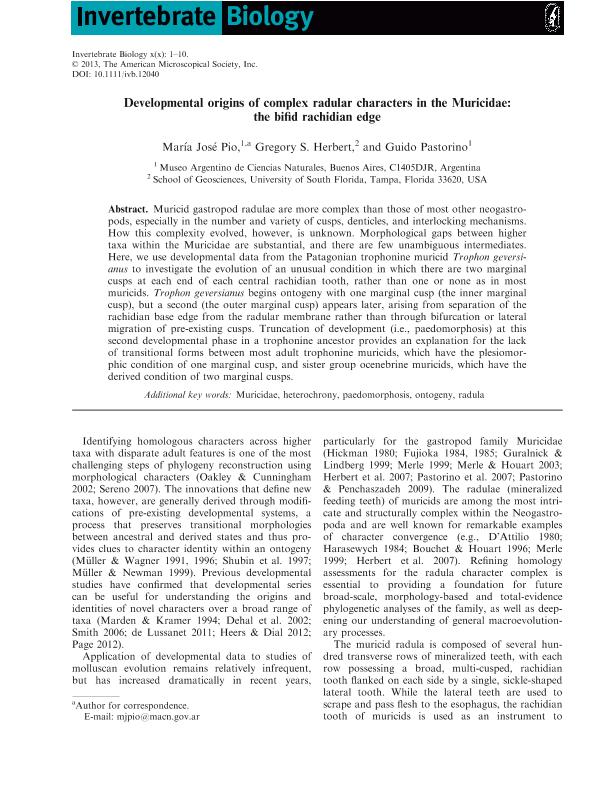Artículo
Developmental origins of complex radular characters in the Muricidae: the bifid rachidian edge
Fecha de publicación:
12/2013
Editorial:
Wiley
Revista:
Invertebrate Biology
ISSN:
1077-8306
Idioma:
Inglés
Tipo de recurso:
Artículo publicado
Clasificación temática:
Resumen
Muricid gastropod radulae are more complex than those of most other neogastropods, especially in the number and variety of cusps, denticles, and interlocking mechanisms. How this complexity evolved, however, is unknown. Morphological gaps between higher taxa within the Muricidae are substantial, and there are few unambiguous intermediates. Here, we use developmental data from the Patagonian trophonine muricid Trophon geversianus to investigate the evolution of an unusual condition in which there are two marginal cusps at each end of each central rachidian tooth, rather than one or none as in most muricids. Trophon geversianus begins ontogeny with one marginal cusp (the inner marginal cusp), but a second (the outer marginal cusp) appears later, arising from separation of the rachidian base edge from the radular membrane rather than through bifurcation or lateral migration of pre-existing cusps. Truncation of development (i.e., paedomorphosis) at this second developmental phase in a trophonine ancestor provides an explanation for the lack of transitional forms between most adult trophonine muricids, which have the plesiomorphic condition of one marginal cusp, and sister group ocenebrine muricids, which have the derived condition of two marginal cusps.
Palabras clave:
Muricidae
,
Heterochrony
,
Paedomorphosis
,
Radula
Archivos asociados
Licencia
Identificadores
Colecciones
Articulos(MACNBR)
Articulos de MUSEO ARG.DE CS.NAT "BERNARDINO RIVADAVIA"
Articulos de MUSEO ARG.DE CS.NAT "BERNARDINO RIVADAVIA"
Citación
Pío, María José; Herbert, Gregory S.; Pastorino, Roberto Santiago Guido; Developmental origins of complex radular characters in the Muricidae: the bifid rachidian edge; Wiley; Invertebrate Biology; 133; 1; 12-2013; 64-73
Compartir
Altmétricas




